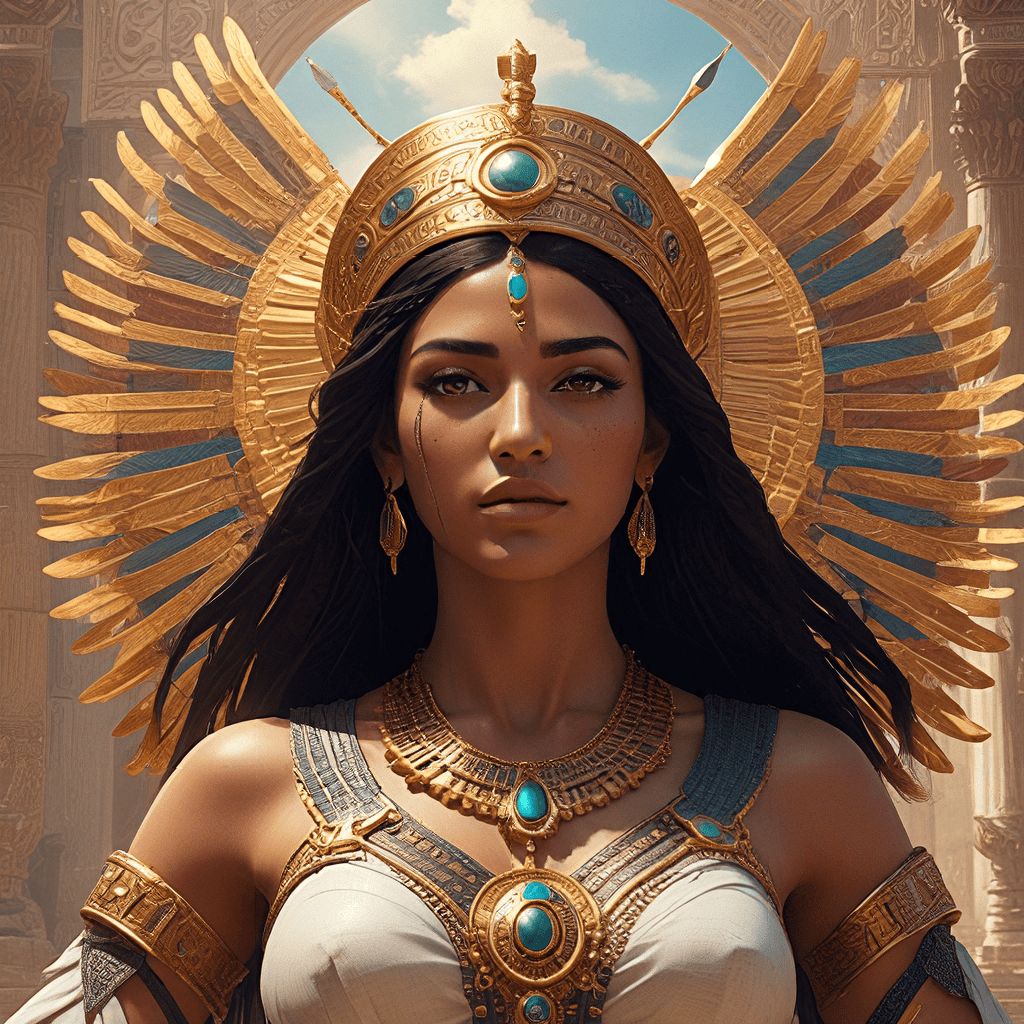Isis: The Goddess of Rebirth
Isis, the powerful goddess of ancient Egypt, is renowned for her multifaceted roles and enduring appeal. She was a mother, a protector, a healer, and a magical figure revered for her ability to bring life back from the brink of death. This article delves into the fascinating story of Isis, exploring her origins, her key myths, and her lasting influence across cultures and through the ages.
1. The Origins of Isis
Isis, the daughter of the earth god Geb and the sky goddess Nut, was a prominent figure in the Egyptian pantheon. She was originally associated with motherhood, magic, and nature, representing the life-giving power of the Nile River. Her early roles highlighted her connection to fertility, healing, and the cycle of creation and destruction. She was also deeply tied to Ra, the sun god, often depicted as a protective mother figure to him. Her connection to Ra solidified her importance in Egyptian religious beliefs, associating her with light, warmth, and life-giving energy.
2. The Osiris Myth
Isis’s most famous myth involves her husband, Osiris, the god of the underworld. Their love story was tragically interrupted when Osiris was murdered by his jealous brother, Set. Isis, heartbroken and determined to bring her husband back, embarked on a perilous journey to find his scattered remains. Her tireless search, fueled by love and unwavering devotion, exemplifies her maternal instincts and her determination to overcome adversity.
3. The Resurrection of Osiris
Isis, a master of magic, used her powerful spells and rituals to reassemble Osiris’s fragmented body. She then used her magical abilities to bring him back to life, though not fully, as a spirit of the underworld. This act of resurrection, a pivotal moment in Egyptian mythology, solidified Isis’s image as the goddess of rebirth and renewal. The birth of their son, Horus, a powerful god who avenged his father’s murder, further reinforced Isis’s role as a symbol of life, hope, and the triumph of good over evil.
4. Isis as Mother and Protector
Isis’s role as the mother of Horus cemented her position as a protective maternal figure. She was seen as a symbol of motherhood, nurturing, and the strength of the mother-child bond. Her love for Horus, her fierce determination to protect him from danger, and her unwavering commitment to ensuring his success resonated with the people of ancient Egypt. This made her a powerful source of inspiration for mothers, children, and families, offering solace and hope in times of need.
5. Isis as a Healer
Isis’s magical abilities extended beyond resurrection; she was also a renowned healer. Her knowledge of herbs, potions, and spells enabled her to heal the sick and injured. She was often depicted in Egyptian art with a protective hand outstretched, symbolizing her power to ward off disease and pain. She was also a symbol of resilience, offering comfort and hope to those struggling with illness and misfortune. Her healing abilities resonated deeply with the people, establishing her as a powerful source of comfort, protection, and hope.
6. Isis as a Magical Figure
The story of Isis is synonymous with magic. She was known for her knowledge of spells, incantations, and rituals, which she used to protect people, heal the sick, and even control the forces of nature. Her ability to transform, symbolized by her wings, emphasized her connection to the spiritual realm and her power to transcend the limits of the physical world. She was a symbol of hidden knowledge and the power of the unseen, inspiring awe and respect. Her mystical abilities captivated the imaginations of people throughout ancient Egypt, making her a beloved and revered figure.
7. Isis in Ancient Egyptian Culture
Isis was an immensely popular goddess in ancient Egypt. Her worship was widespread, evident in the numerous temples and shrines dedicated to her. She was often depicted in art and architecture, her powerful image reminding people of her protective power, her connection to nature, and her ability to bring life from death. Her symbols, such as the cow and the vulture, signified her nurturing and protective nature. Her importance in Egyptian culture was undeniable, and her influence extended beyond religious practices into everyday life.
8. Isis in Later Cultures
Isis’s influence extended beyond the borders of ancient Egypt. Her story captured the attention of the Greeks and Romans, who incorporated her into their own mythologies, associating her with figures like Aphrodite and Venus. Her worship spread throughout the Mediterranean, with temples dedicated to her appearing in cities like Rome and Alexandria. Her enduring appeal lies in her ability to embody hope, renewal, and the resilience of the human spirit. She became a symbol of strength, protection, and the ultimate triumph of good over evil.
9. Isis in Modern Times
Today, Isis continues to hold a powerful presence in the world. She is a source of inspiration for artists, writers, and scholars, and her story continues to be told and reinterpreted. She has become a symbol of female power and strength, representing the enduring spirit of women and their ability to face adversity. Her story resonates with many seeking spiritual guidance, and she is often seen as a symbol of renewal, transformation, and the promise of a better future. Her enduring appeal underscores the power of her myth and the enduring relevance of her story for people across cultures and through the ages.
10. Conclusion
The legacy of Isis remains powerful, reminding us of the enduring power of hope, rebirth, and the triumph of good over evil. Her story transcends cultural boundaries and speaks to the core of the human experience, touching upon themes of love, loss, resilience, and the unwavering spirit of a mother protecting her child. Whether as a goddess of magic, healing, or motherhood, Isis continues to inspire awe and wonder, reminding us of the transformative power of faith and the enduring strength of the human spirit.




